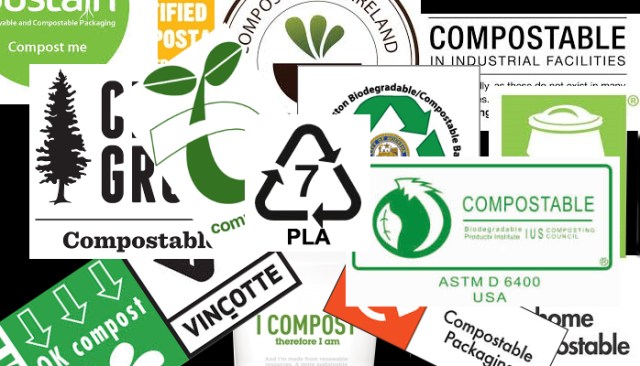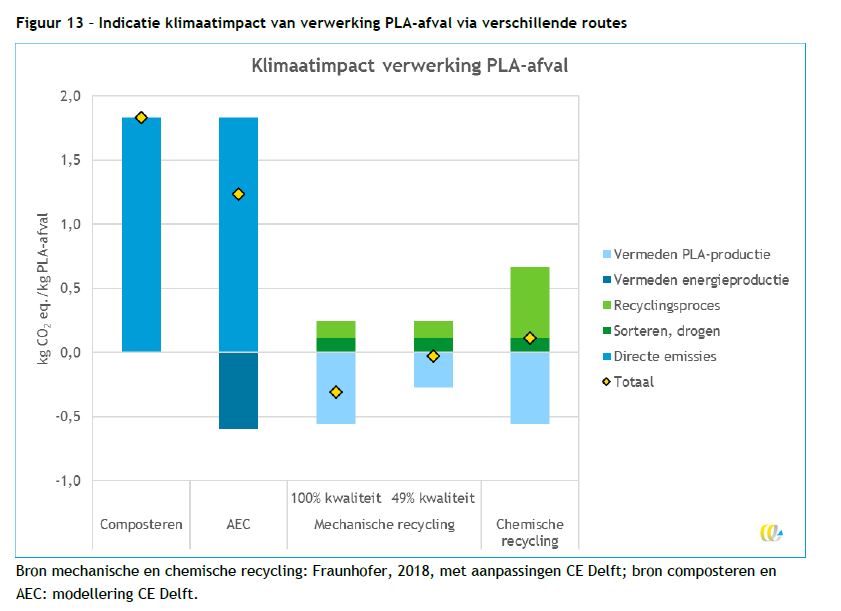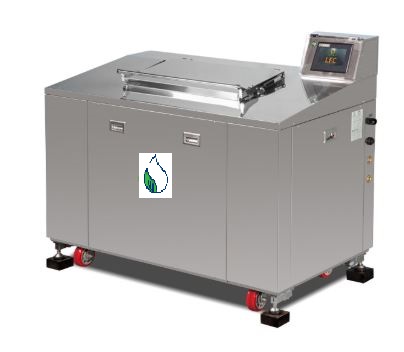ASTM standard D6400
This specification ASTM standard covers plastics and products made from plastics that are designed to be composted in municipal and industrial aerobic composting facilities. The properties in this specification are those necessary to determine whether plastics and products made from plastics will compost satisfactorily, including biodegradation at a rate comparable to known compostable materials. The purpose of this specification is to establish standards for identifying products and materials that will compost satisfactorily in commercial and municipal composting facilities.
1. Scope of application
1.1 This specification covers plastics and products made from plastics that are designed to be composted under aerobic conditions in municipal and industrial aerobic composting plants, where thermophilic conditions are achieved.
1.2 This specification is intended to establish requirements for labeling materials and products, including plastic packaging, as “compostable in aerobic municipal and industrial composting plants”.
1.3 The properties in this specification are those necessary to determine whether finished products (including packaging), using plastics and polymers as coatings or binders, will compost satisfactorily, in large-scale aerobic municipal or industrial composting facilities. Maximum throughput is a high priority for composters and the intermediate stages of plastic disintegration and biodegradation are not visible to the end-user for aesthetic reasons.
1.4 The following safety hazard caveat relates to the Test Methods section of this standard: This standard is not intended to address all potential safety concerns associated with its use. It is the responsibility of the user of this standard to establish appropriate safety, health and environmental practices and determine the applicability of legal restrictions prior to use.
NOTE 1: This test method is equivalent to ISO 17088.
1.5 This International ASTM Standard has been developed in accordance with internationally recognized principles of standardization laid down in the Decision on Principles for the Development of International Standards, Guides, and Recommendations of the Committee on Technical Barriers to Trade of the World Trade Organization (TBT).







ASTM Standard D5338
ASTM Standard test method for determining aerobic biodegradation of plastic materials under controlled composting conditions, with thermophilic temperatures.
Meaning and usage
–Biodegradation of plastic in a composting unit is an important phenomenon because it can affect the degradation of other materials entrapped by the plastic and the resulting quality and appearance of the composted material. Biodegradation of plastics will also allow for the safe disposal of these plastics through large, professionally managed composting facilities and well-managed residential units, where thermophilic temperatures are reached. This procedure has been developed to determine the rate and extent of aerobic biodegradability of plastic products when placed in a controlled composting process.
–Limitations— Because there is great variation in the construction and operation of composting plants and because the legal requirements for composting systems vary, this procedure is not intended to simulate the environment of a particular composting system. However, it is expected to resemble the environment of a composting process carried out under optimal conditions where thermophilic temperatures are reached. More particularly, the procedure is intended to create a standard laboratory environment that allows a rapid and reproducible determination of aerobic biodegradability under controlled composting conditions.
Scope of application
1- This ASTM standard test method determines the extent and rate of aerobic biodegradation of plastic materials when exposed to a controlled composting environment under laboratory conditions at thermophilic temperatures. This test method is designed to provide reproducible and repeatable test results under controlled conditions similar to composting conditions, where thermophilic temperatures are reached. The test chemicals are exposed to an inoculum derived from municipal solid waste compost. Aerobic composting takes place in an environment where temperature, aeration, and humidity are closely monitored and controlled. NOTE 1: During composting, thermophilic temperatures are most easily achieved in large-scale, professionally managed facilities. However, these temperatures can also be achieved in smaller residential composting units, often referred to as “backyard” or “home” composting.
2- This test method is designed to produce a percentage of the conversion of carbon in the sample to carbon dioxide. The rate of biodegradation is also monitored.
3- This test method is designed to be applicable to all plastic materials intended to be composted in plants reaching thermophilic temperatures.
4- The values stated in SI units are to be considered as standard.
5- This standard is not intended to address all possible safety concerns associated with its use. It is the responsibility of the user of this standard to establish appropriate safety, health, and environmental practices and determine the applicability of legal restrictions before use. Specific hazard statements are included in section 8.
6- This standard is not intended to address all possible safety concerns associated with its use. It is the responsibility of the user of this standard to establish appropriate health and safety practices and determine the applicability of regulatory restrictions before use.
7- This test method is equivalent to ISO 14855.
8-This International Standard has been developed by internationally recognized principles of standardization laid down in the Decision on Principles for the Development of International Standards, Guides, and Recommendations of the Committee on Technical Barriers to Trade of the World Trade Organization (TBT).